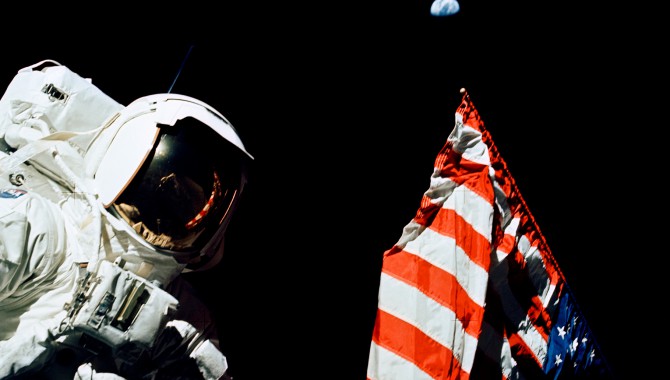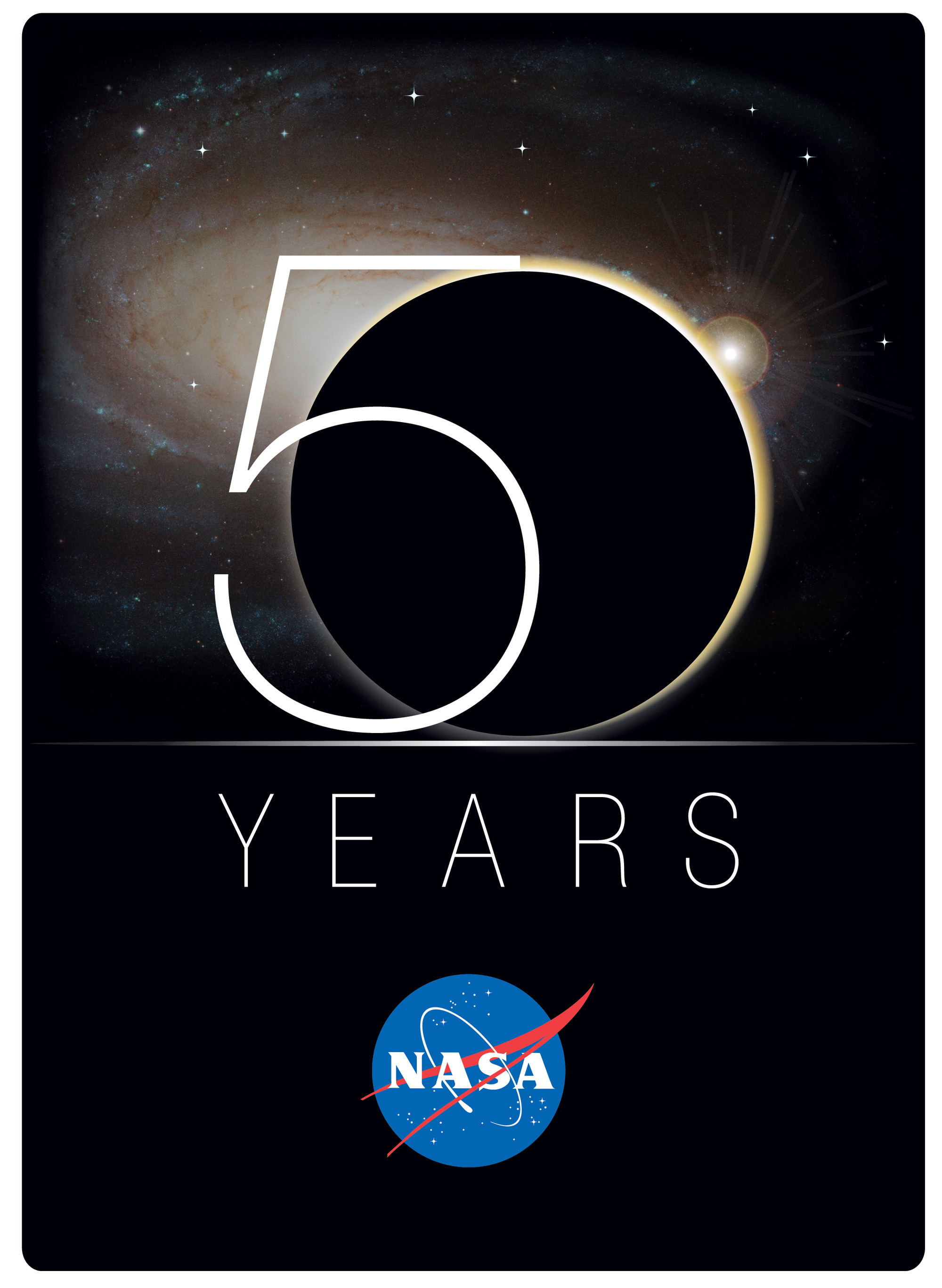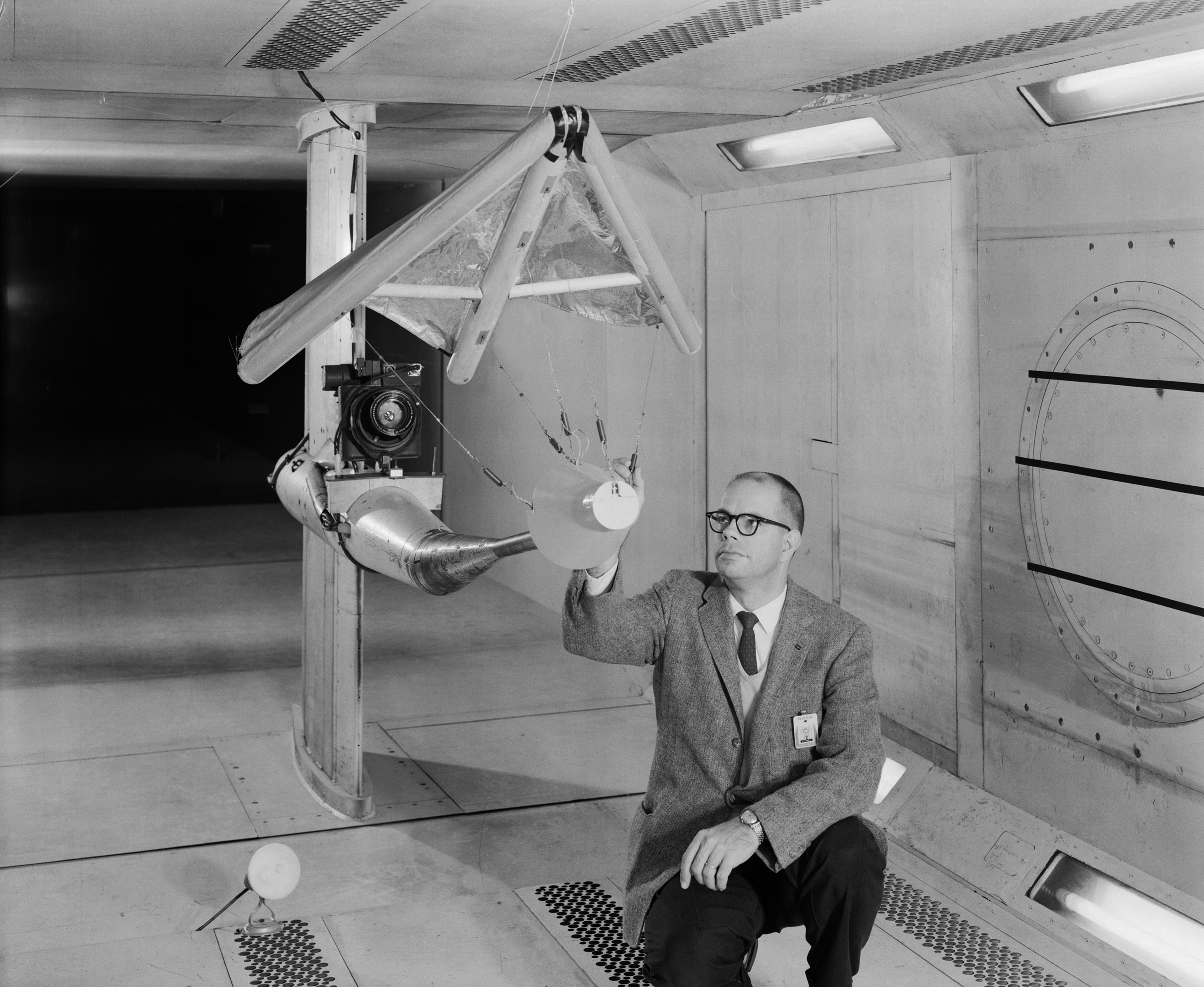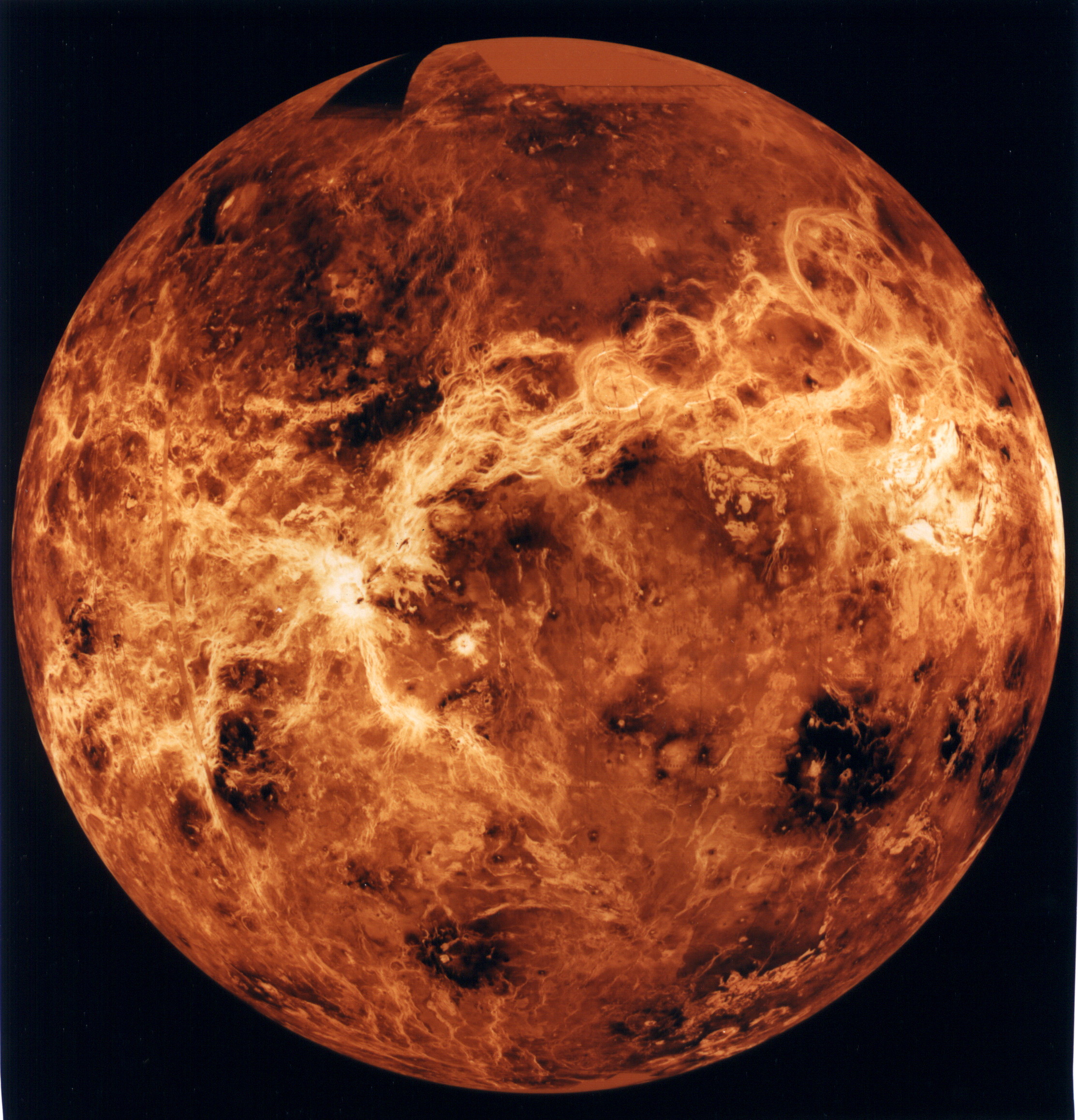
We asked some long-time NASA people to describe events during their careers at the Agency that they consider especially vivid or meaningful. We got a range of responses—from personal evocations of a moment of inspiration or crisis to descriptions of the challenge of saving a threatened project or the satisfaction of years of scientific discovery. What they all express in common, though, is a passionate commitment to the mission of space exploration.
There is a feeling of unreality as you strap into the spacecraft, and then the first stage lights and the acceleration and vibration just seem to grow and grow and grow. For the first two minutes, I was more a passenger than a crewmember. Had we had a major problem, I’m not sure how well I would have responded. But the first stage cuts off; you come forward in the straps; you look around. The second stage lights, and it’s very gentle. You take a deep breath and all your training comes back. The experience of launch; the feeling of weightlessness, of being a satellite on your own floating inside another, larger satellite; and the view of the earth as you go around are the three wonders of that trip. I hope that one or more of these commercial enterprises that are under way take off, have success, and bring the price down to where it’s in reach of a great many people.
– Joe Kerwin, physician and former NASA astronaut, and the first physician ever to be selected to be an astronaut
In 1977, while I was Associate Administrator for Space Science, the Hubble Space Telescope and the Galileo mission to Jupiter were both presented to Congress for funding. James Fletcher, NASA’s Administrator at that time, told me I wasn’t going to get both missions and to pick one. I told him I thought we could get both. Delightfully, he let me try. The House appropriations subcommittee had approved Hubble but deleted funds for Galileo. But the House authorizing subcommittee had approved the Jupiter mission, so the disagreement needed to be resolved by a floor vote of the full House.
I went to the Hill to watch it. After a long, intense discussion, the vote was taken: 280 in favor of Galileo; 131 opposed; 22 abstentions. We had won. I went back to the administrator that same afternoon and said, “Jim, I told you we could do it.“ He looked at me and said, “Noel, you may live to regret that.“ Indeed, the following year at the House appropriations subcommittee hearing the chairman, Edward Boland, really took after me. He was still angry and extremely frosty.
It was worth it! We got Hubble and an incredibly exciting planetary mission, two of the highlights of my five years as Associate Administrator for Space Science.
– Noel Hinners, formerly NASA’s Associate Administrator for Space Science (1974–1979), director of Goddard Space Flight Center (1982–1987), and director of the Smithsonian National Air and Space Museum (1979–1982)

The Hubble Space Telescope has yielded mountains of information about the universe, including this color mosaic of the Orion Nebula (M42).
Photo Credit: NASA, ESA, and the Hubble Heritage Team (STScI/AURA)
I was managing Galileo, which had been rescheduled several times due to external factors, mainly related to the shuttle program. It was originally scheduled for launch in 1982, then 1984, then 1986. Each change involved major reprogramming requiring different upper-stage configurations and different spacecraft configurations. Keeping the project intact through it all was programmatically and technically challenging. For the ’86 launch our plan was to use the shuttle with the wide-bodied Centaur upper stage to send Galileo on to Jupiter. In January of ’86, we were at the Cape readying the spacecraft for launch in May. The project had been stable and undisturbed for a couple of years, and it looked like we were finally on track for a May launch.
Then the Challenger accident happened. We knew that would mean a long delay before there would be another shuttle launch. Later we had other bad news. NASA decided that the Centaur was potentially too dangerous to fly on the shuttle. We were left with the much less energetic IUS (Inertial Upper Stage), which we ‘knew’ couldn’t get us to Jupiter.
I encouraged people to think of anything and everything that might work. We began to explore the possibility of launching on the Russian Proton rocket, though that clearly would involve political issues. One day, a young engineer came to my office and suggested a new, radically different trajectory that would work with the lower-power upper stage. It would mean getting gravity assists from a Venus flyby, followed by an Earth flyby, going out to the asteroid belt, then back for a second Earth flyby, and then on to Jupiter. I immediately saw that this was a viable solution. We would have to make a few changes to the spacecraft. It would need new heat shielding because it would travel closer to the sun than in the original mission plan. It would need a second lowgain antenna to give coverage on the aft side of the spacecraft, because Earth would be on the aft side during the time the spacecraft was traveling inside the orbit of Earth. Thanks to my earlier work on the Mariner 5 and Mariner 11 projects, I knew these changes were doable. Galileo launched in 1989 and arrived at Jupiter in 1995.
For me, the lessons of this often-challenged project were
- Don’t ever give up
- Be open to innovative solutions and ready to try things that have never been tried before
Years later, a colleague said the word back then was that, ‘Casani lives in a world without corners,’ meaning that, in spite of all the programmatic and technical challenges faced by Galileo, the project always found a way to slip out of the corner.
– John Casani, currently special assistant to the director at the Jet Propulsion Laboratory; previously managed Voyager, Galileo, and Cassini
Many scientists would be happy to make a discovery every year. Those of us on the Voyager team were fortunate to have participated in floods of discoveries: one surprise after another that have changed and deepened our understanding of the solar system.
The two Voyagers were launched in 1977. For over a year they traveled toward the outer planets with only some of the scientific instruments returning data. Then, as Voyager 1 approached Jupiter, increasingly better information poured in day after day. Every afternoon for more than a week, the science team met to discuss what had arrived in the previous twenty-four hours, what we were learning, and what we did not yet understand about the data. The following morning we would have a press conference to announce our new insights into the planet. That afternoon, we would examine more new data in another science meeting and the process would repeat itself.
The surprises kept coming. Images of Io, one of Jupiter’s four moons, showed hundreds of black spots. Although it had just been proposed that Jupiter’s moon would experience tidal heating from the gravitational pull of the giant planet, until we actually saw a volcanic plume, we couldn’t take the leap and acknowledge that those spots were calderas. We had discovered hot lava lakes and nine active volcanoes on Io. That was the end of the old idea that the further reaches of the solar system would be cold and dead.
We experienced those intense, illuminating seven- to ten-day periods of discovery in the years following as the Voyagers flew by Saturn, Uranus, and Neptune and their satellites. The wealth of new information also gave us opportunities to engage the public and share the excitement of the many discoveries. In those days before the advent of the World Wide Web, we sent real-time pictures to planetariums around the country. Crowds gathered to glimpse these first close-up images of what had been, until then, little-known points of light in the sky.
Even today, more than thirty years after the twin Voyager spacecraft left Earth, we are still learning and still surprised. Voyager 1 is approaching the heliopause, the extreme outer edge of the bubble of solar wind ions that envelope the solar system. It is already in the area where a shock forms as the million-mileper- hour outbound wind of solar ions abruptly slows as it presses outward against the external interstellar wind. We expected that shock would heat the solar wind ions but found that the energy of the collision mainly heats ions coming from outside the solar system—another surprise we are striving to understand.
In another seven years or so, Voyager 1 will leave the solar bubble and begin traveling through material that comes from other stars. The scientific adventure—and the learning—continues.
– Ed Stone, former director of the Jet Propulsion Laboratory (1991–2001), Voyager project scientist, and currently professor of physics at Caltech
My most vivid moment was my time as mission director on Viking and landing on Mars. No one had ever landed a spacecraft on Mars—or any planetary body other than the moon—and had it successfully operate afterward. We were doing something no one had ever done before. It was an extraordinary engineering challenge, but even more than that we had the opportunity to learn firsthand about a planet that had been shrouded in mystery and intrigue for decades. The science was exciting, and the engineering was exciting. It was tough to do and had no certainty of being successful.
As we approached Mars orbit, one of the first things we ran into was a helium leak in the propulsion system. The helium pressurized the fuel in the rocket onboard the orbiter, and if we didn’t do something about the leak, the pressure would build up and it would explode. We had two possible courses of action: we could blow a pyrotechnic valve that would seal off the helium so it wouldn’t leak anymore, or we could burn the engine periodically, doing a large number of midcourse maneuvers to relieve the pressure. The easy thing to do was to blow the pyrotechnic valve. The problem was it would leave us to rely on only one working pyrotechnic valve. If that one didn’t work, the mission would fail. So we chose the hard way, the series of midcourse maneuvers. This meant a lot of work for all of us on the flight team, but it worked.
As we got even closer to Mars, we began to worry that the preselected landing site was too rough. Now, the smallest thing we could see was the size of the Rose Bowl, but all the geologists and people who really understood Mars knew enough to worry about the site. We took time looking for a new landing site. We were originally supposed to land on July 4, 1976, to celebrate America’s bicentennial, but we never hesitated one second to abandon the 200th anniversary. We never considered taking extra risks to meet that date.
The lander was finally ready to land. The landing went as expected, and I remember the feeling of relief, excitement, and anticipation when it landed and we confirmed we were really on the surface and things were working well. At that point it was an engineering success. But we didn’t go there for an engineering success, we went there to learn about Mars.
It was a fantastic feeling, but we had yet to learn what Mars looked like. I remember watching as the first picture came in. The resolution was such that you could see something as small as a blade of grass. Seeing that picture come in was the fulfillment of the eight or nine years I spent working on Viking.
– Tom Young, mission director for Viking
There were tremendous people in the mission planning and analysis division who developed all the information about when to conduct burns, how long they would be, and the spacecraft’s attitude during the burns. Starting with Apollo 8, they did a fantastic job building on the experience of the robotic missions. I still marvel, back then and to this day, at their accuracy. Everything came out almost to the second.
It was our job in flight planning to fit in all the crew activities and procedures so things happened when they were designed to happen. When we flew those Apollo missions, we had a set of simulators here at Johnson Space Center—a command module simulator and a lunar module simulator. There was a duplicate set at Kennedy Space Center (KSC), and the set in the training facility at KSC was kept in the absolute configuration of the flight so that, late in the game, whatever changes were made were implemented at KSC. The crews spent the last couple of months training at KSC, and we would go down there and do all the final flight planning and procedure adjustments out of a little office at KSC.
I had that duty for Apollo 11. I was there with a couple of other people working on all the things leading up to the mission. It was quite a task because there were so many possible adjustments to the procedures and the flight plan. We made 1,100 changes in the last two months. Some of the adjustments came from refinements of the trajectory. Even more of them came from a more detailed understanding of how systems might operate in the lunar environment. And we made some changes late in the game having to do with the settling of the spacecraft on the lunar surface and whether any propellants would be trapped in the nozzle of the engine and therefore be an explosive hazard. So we developed procedures to bleed off residual propellant. We had to verify all these changes, carry them out in the simulators, and validate that they were ready to go. We worked with the flight control team back in Houston to make sure that it was all squared away with them.
You can imagine that we stayed a little nervous, hoping everything was the way it was supposed to be to carry out this mission. When Apollo 11 landed, we felt tremendous accomplishment but also concern about how things would go on the surface and then how they would go when we had to lift the ascent module off the moon and rendezvous with the command module for the trip home. Once they had rendezvoused and the command module and crew were on the way back, we breathed a little sight of relief. There wasn’t total relief until those three parachutes were out there and they were descending to the ocean.
We had such gifted managers in the program. The secret of Apollo was the capability of the management team and the hard work of all the supporting people trying to make it happen. Their dedication, conviction, and enthusiasm were unbelievable. No one left work. They might go home for a while, but no one left work.
– John O’Neill, chief of the Flight Planning Branch during Apollo 11 and deputy director of the Mission Operations Directorate during Apollo 13
As a very young child, I had a strong interest in space exploration and pursued it with all my intellectual curiosity. I was also a co-founding member of our fourth grade science club, and I hoped that someday I could contribute to this great endeavor, however unlikely that seemed at the time.
Then along came “reality“—the draft, Vietnam, and the Tet Offensive—and those visions were lost to the insanity and turbulence of that age. Little did I realize that when I returned from that life-changing experience, I would experience another within less than a year.
Like most of the other billion-plus people who witnessed it, the most vivid and moving NASA moment for me was watching Neil Armstrong and Buzz Aldrin take those first steps on another world. I also had a deep interest in journalism and interpretive reporting—the human stories behind the news. I watched Walter Cronkite become speechless at the sight of the first human lunar landing. He turned to Eric Sevareid, who commented that, because of what we are witnessing today, “I now have hope that humankind will endure in the cosmos, despite what we may do to ourselves here on this Earth.“ I knew, at once, that I had heard a fundamental truth. That visual experience, those compelling words, that seminal moment touched me, rekindling the curiosity and drive that would help a child’s distant, and seemingly unreachable goal, become a reality—to somehow contribute, in however small a way, to this amazing, inevitable adventure.
– Lewis Peach, former vice president for Exploration and Technology and chief engineer for USRA, director of Advanced Programs in the Office of Space Flight at NASA, deputy director for space station engineering, and associate director for computational physics and supercomputing








